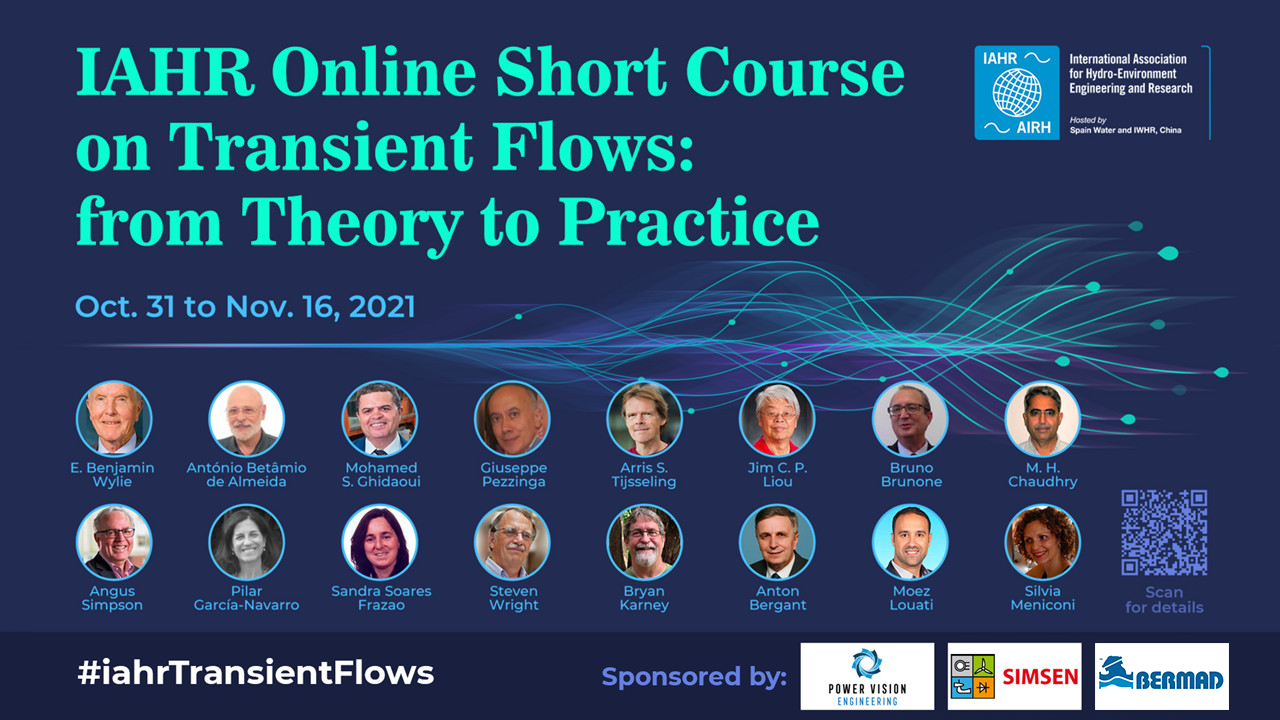IAHR Online Short Course on Transient Flows: from Theory to Practice
« Back to list of video collections
This collection accommodates the recordings of lectures from the IAHR Online Short Course on Transient Flows: from Theory to Practice, and is available for IAHR members only (not including those who have a free IAHR account). To watch these videos, please log in or become an IAHR member first.
This course is organized by the Working Group on Trainsient Flows. It represents a historical event where the most senior professors and experts in transient flows are invited to deliver a 2h lecture on their field of expertise. This gives the opportunity to transfer the knowledge and best advices from our most respected and accomplished professors to the next generations of academicians and engineers.
This course provides a synthesis of several aspects of transient flows phenomena. It focuses on the fundamental physics and basic numerical and experimental approaches for the modelling of pressurized and free-surface hydraulic transients, as well as their practical engineering applications.
The course highlights the importance of understanding well extreme transient flows, such as the water hammer in pressurized conduits or the dam break phenomenon in free-surface flows, for the better application of advanced numerical codes. Experimental methods will be introduced and state-of-the-art instrumentation presented as key elements for the verification and validation of new modelling assumptions. Some of the phenomena associated to transient flows that need a better understanding are multi-phase flows, unsteady friction, pipe-wall material behaviour, fluid-structure interaction or cavitation. All these, together with their practical implications in engineering designs and infrastructure operations, will be tackled during this course with the support of real case studies.
Click for Presentation Slides.
For more details, please visit the webpage dedicated to this course.
-
Moez Louzti - Transient Flows Online Short Course Introduction
2021-11-09 -
Joseph Lee - Opening Remarks
2021-11-05 -
E. Benjamin Wylie - Introduction of Transient Flows Online Short Course
2021-11-09 -
António Betâmio de Almeida - Pressure Hydraulic Transients in Engineering Systems: Induced Accidents and Surge Protection
2021-11-09 -
Mohamed S. Ghidaoui - Part 1 of Fundamentals of Waterhammer Waves
2021-11-09 -
Mohamed S. Ghidaoui - Part 2 of Fundamentals of Waterhammer Waves
2021-11-09 -
Giuseppe Pezzinga - Unsteady Friction in Pipe Flows
2021-11-10 -
Jim C. P. Liou - Frictional Water hammer – line packing and drafting
2021-11-10 -
M. H. Chaudhry - Modeling of transient free-surface-pressurized flows
2021-11-11 -
Sandra Soares Frazao - Non-intrusive methods for fast transient flow measurements
2021-11-11 -
Arris S. Tijsseling - Water Hammer with Fluid-Structure Interaction
2021-11-12 -
Bruno Brunone - Time domain analysis for transient-based defect detection methods and applications
2021-11-12
